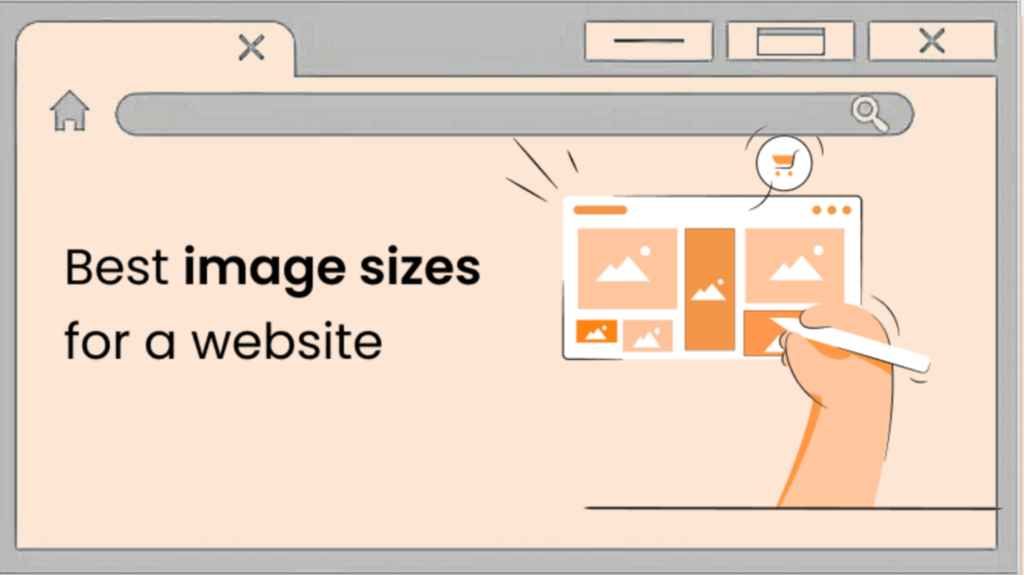
What is the Best Image Size for Web Optimization?
Introduction
In today’s digital world, website speed and user experience matter more than ever. One of the biggest factors affecting site performance is image optimization. Using the right image sizes ensures faster load times, better SEO rankings, and an overall improved user experience.
Why Image Optimization Matters
Improves Page Speed
Large images can slow down your website. Faster load times keep visitors engaged and improve conversion rates.
Enhances User Experience
A site that loads quickly with crisp, well-sized images makes navigation smooth and engaging for users.
Boosts SEO Rankings
Google prioritizes fast-loading sites in search results. Optimized images contribute to better rankings.
Reduces Bandwidth Usage
Compressed and properly sized images use less bandwidth, helping mobile users and reducing server costs.
Understanding Image Size and Formats
Difference Between Image Dimensions and File Size
Dimensions (e.g., 1920×1080 pixels) refer to the height and width of an image, while file size (e.g., 200KB) determines how much storage it takes up.
Common Image Formats for the Web
JPEG: Best for Photos
Uses lossy compression, making it ideal for high-quality photographs with reduced file sizes.
PNG: Best for Transparency
Supports transparent backgrounds but has a larger file size due to lossless compression.
WebP: Best for Compression
Google’s WebP format provides excellent quality at smaller file sizes, making it the best for performance.
SVG: Best for Logos and Icons
Scalable without quality loss, perfect for logos, icons, and vector-based graphics.
Best Image Sizes for Different Web Elements
- Featured Images & Blog Thumbnails: 1200×628 pixels ensures clarity and fast loading.
- Hero Banners & Full-Width Images: 1920×1080 pixels or 2560×1440 pixels.
- E-Commerce Product Images: 800×800 pixels to 1000×1000 pixels for clear, zoomable images.
- Social Media Images on Websites: Instagram: 1080×1080 pixels, Facebook: 1200×630 pixels, Twitter: 1024×512 pixels.
- Background Images: 1920×1080 pixels or larger, compressed under 1MB.
How to Optimize Images for Web Performance
Choosing the Right Compression Level
Lossy (smaller size but slight quality loss) vs. Lossless (retains quality but larger size).
Using Responsive Images (srcset)
Implementing srcset ensures different image sizes load on different screen resolutions.
Implementing Lazy Loading
Adding loading="lazy" delays image loading until the user scrolls to them, boosting performance.
Leveraging CDN for Faster Delivery
Content Delivery Networks (CDNs) cache images globally, ensuring fast access for users worldwide.
Best Tools for Image Optimization
Online Compression Tools
TinyPNG, ImageOptim, and Squoosh offer easy, free online compression.
Plugins for WordPress & Shopify
ShortPixel, Smush, and Imagify optimize images automatically on CMS platforms.
Manual Optimization Techniques
Photoshop’s “Save for Web” feature, resizing images before upload, and batch processing help with manual optimization.
Common Mistakes to Avoid in Image Optimization
Uploading Oversized Images
Always resize before uploading; avoid full-resolution images unless necessary.
Ignoring Mobile Optimization
Mobile users require optimized images to prevent excessive load times.
Using the Wrong Format
PNGs for large photos and JPEGs for logos/icons waste space—use the right format!
Not Using Alt Text for SEO
Always add descriptive alt text for accessibility and search engine ranking benefits.
Conclusion
Optimizing images is a game-changer for website speed, SEO, and user experience. The best image sizes depend on their purpose, but following compression techniques, using proper formats, and implementing lazy loading can significantly improve site performance.
FAQs
1. What is the ideal image size for a website?
It depends on the use case, but generally, images should be under 200KB with proper compression. Hero images can be up to 1920×1080 pixels.
2. How do I compress images without losing quality?
Use WebP format or online tools like TinyPNG, which balance quality and compression.
3. Should I use PNG or JPEG for website images?
JPEG is better for photos, while PNG is better for graphics with transparency.
4. What is the best way to optimize images for mobile?
Use responsive images with srcset and ensure file sizes are small for quick loading.
5. How does image optimization affect SEO?
Faster-loading images improve user experience, leading to better SEO rankings on Google.